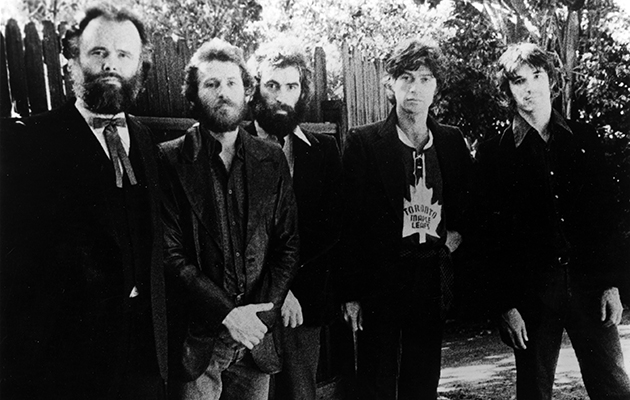The Hawks had always possessed a Zelig-like quality. Whether in the earliest days with Ronnie Hawkins, or as Levon & The Hawks, or backing Dylan through his vitriolic electric tours, each time they adapted their style to suit. The one constant was amplified rock’n’roll. “The last time I’d heard them play was when they were on the road with Bob in ’66,” says their tour manager at the time, Jon Taplin. “That was very brash, loud, lots of solos.”
It would be hard to recognise the group of musicians convening at Big Pink from that description. “Now we were in this basement, with all those hard surfaces, our usual style became a little irritating on the ears,” says Robertson. “So we ended up playing in a way that we had a balance amongst us. If anybody was playing too loud it was really obvious because you couldn’t hear the singer. That became a bit of a standard of us in a circle, playing to one another.” Hudson talks about each member “accompanying the words. When the singer was singing the guitar would play something that would complement it. That’s also how I saw my job: texture, the occasional solo, little fills. It’s simple. In the basement, we were all close together, it was an acoustic approach, and I think when you listen to Big Pink you hear that. Nobody tries to jump in and take over.”
In these quieter surroundings the voice became king, especially after Helm returned to the fold, having got wind of what was happening in the hills. The hair-raising combination of his hardscrabble holler, Manuel’s tortured falsetto and Danko’s emotive sob had “parallels in a lot of raw Appalachian and Delta music,” says Big Pink producer John Simon. “It sure ain’t city stuff.” It reflected what they were listening to: the Staple Singers, The Carter Family, Otis Redding, New Orleans jazz, gospel, Delta field recordings, all a million miles away from the trends of folk songwriters, underground rock and psychedelia.
“It was a combination of mountain music and spirituals, and we started to get an appreciation for harmonies that we would hear from Johnnie & Jack, or the Louvin Brothers,” admits Robertson. “Mountain music! And we were up in the mountains, so it all seemed like it fit together. There was something so pure about it. It was pure American – and so is rock’n’roll. It all came together, but when you’re in it, you don’t dissect it, you’re following your gut feelings.”
They were also reacting to changes in Dylan’s writing. The quicksilver edge of Blonde On Blonde had been replaced with a phantasmagorical mix of woody traditional textures and words centring on myth and fable, often apparently imparting some coded moral lesson. The bleed between the basement songs and Big Pink is a fine one. “Some of those songs got incorporated into what we were doing,” confirms Robertson. “Richard wrote ‘Tears Of Rage’ with Bob, Rick wrote ‘This Wheel’s On Fire’ with Bob, I was off writing songs like ‘To Kingdom Come’, ‘Chest Fever’, ‘Caledonia Mission’, and it was all starting to come together.”
The five men were a “functioning democracy”, according to Big Pink producer John Simon, listing their attributes. Danko was “a very melodic bass player and a lot of fun to hang with”. Helm was “a born musician, who sang with the tradition of those generations-ago singers of sincerity and conviction in his subconscious”. Hudson was – and is – a “genius with a Cartesian mind” and Manuel was simply “The Singer”. Robertson, meanwhile, was the director figure, overseeing the entire picture, “paying special attention to how all the elements in the arrangement fit together, including his guitar parts”.
Although he would not fully emerge as The Band’s principal songwriter until their second album, the guitarist was already “the architect of their sound”, says Simon. On “Caldedonia Mission” and “Chest Fever”, principally sung by Danko and Manuel, respectively, he would sing their lines to them to let them know exactly what he wanted, and they would copy his phrasing. “It was casting on my part,” says Robertson. “Who could pull off these songs the best?” The sense of character and emotional authenticity was key. Robertson imbued his new songs, and others such as “The Weight” and “Yazoo Street Scandal”, with a tangible sense of place and personal history which came to define The Band’s music. “It was all stuff gathered subconsciously playing the Chitlin’ circuit,” he says. “Going from Canada down to the Mississippi Delta, it overwhelmed me and got under my skin. All the names of the places – there really was a Yazoo Street! I started putting them up in my attic, and years later I went in and pulled these things out.”


